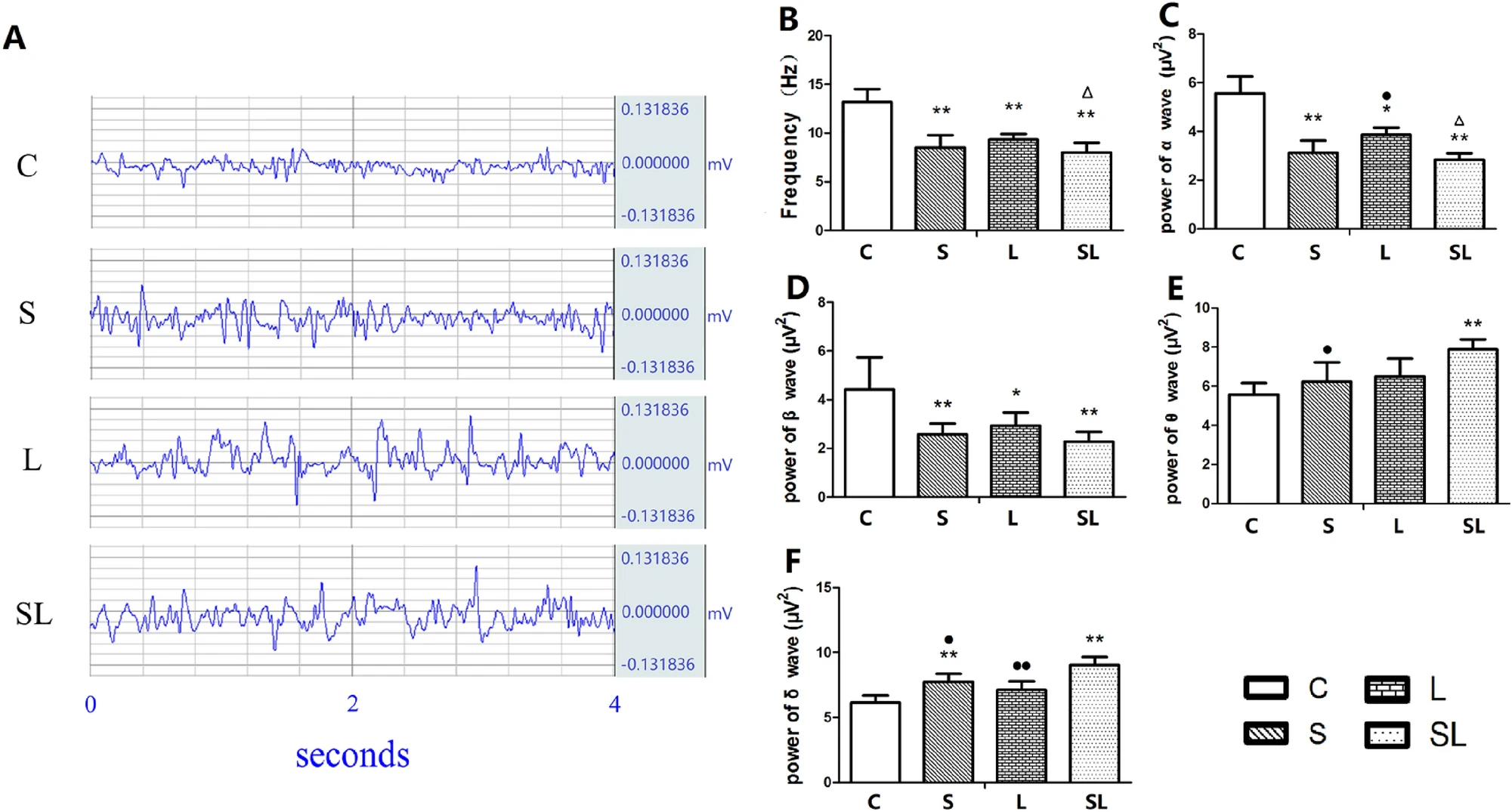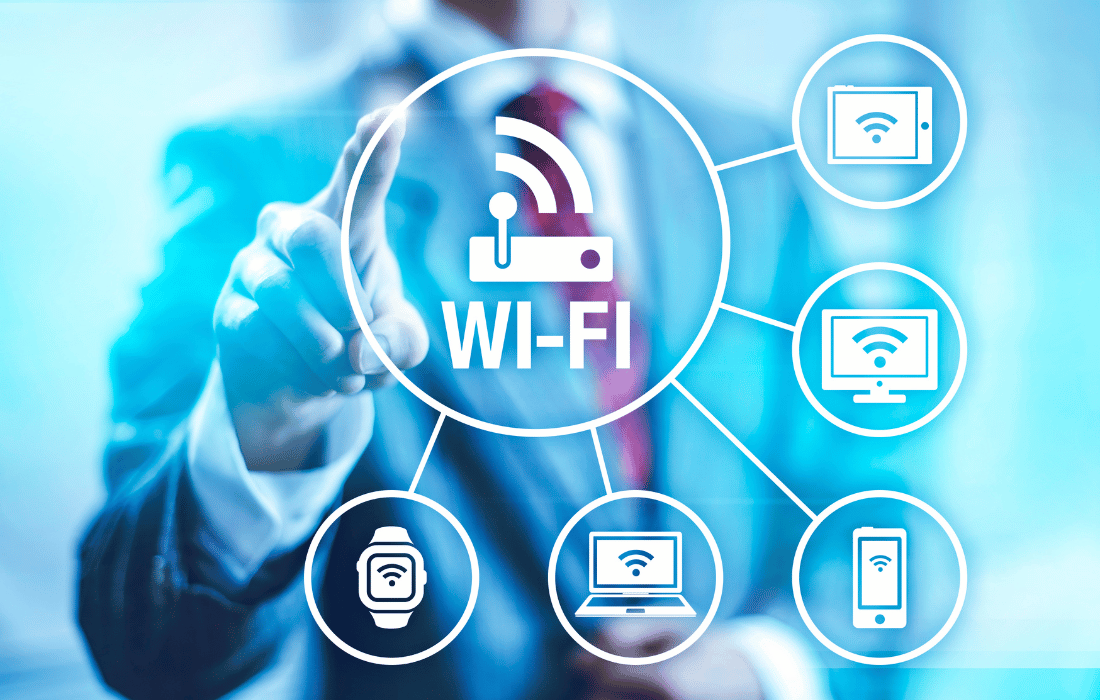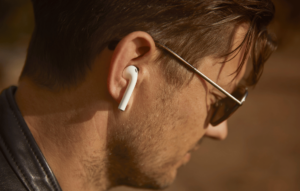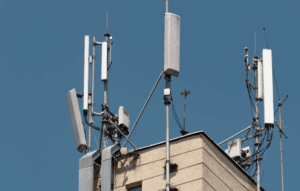Let’s face it: we live in a wireless world. Our phones, laptops, tablets, smart TVs, gaming consoles, headphones—even refrigerators—are tapping into the invisible ether of Wi-Fi. But behind the convenience and connectivity lies a growing body of research suggesting that Wi-Fi radiation, specifically the 2.4 GHz and 5 GHz frequencies, may be taking a toll on our health in ways we can no longer afford to ignore.
And for men? This hits even harder. We’re talking testosterone, fertility, mental health, memory, inflammation, and even the development of chronic diseases. If you’re the type to brush this off as conspiracy fodder, get ready—the science is in, and it’s not pretty.
What Exactly Is Wi-Fi Radiation?
Wi-Fi operates using radiofrequency electromagnetic fields (RF-EMF), usually at 2.4 GHz and increasingly at 5 GHz. It’s the same basic technology as your cellphone, baby monitor, and Bluetooth headset, but instead of a phone-to-tower signal, it’s router-to-device, constantly pinging to maintain connection.
Continuous Bursts, Constant Exposure
Unlike older technologies that pulsed occasionally, modern Wi-Fi devices emit non-stop radiation. Your laptop, printer, gaming console, and even your smart thermostat are constantly sending and receiving data, even when you’re not actively using them.
The Growing Body of Evidence: What the Studies Say
If you think concerns about Wi-Fi are limited to tinfoil hat territory, think again. Dozens of peer-reviewed studies from around the world have documented real, measurable harm from Wi-Fi radiation, especially at the 2.4 GHz frequency. Here’s a deep dive into the science that’s too compelling to ignore.
Oxidative Stress and Inflammation
Oxidative stress is like rust for your body, and Wi-Fi seems to supercharge it. Dozens of studies show increases in reactive oxygen species (ROS), decreased glutathione, and heightened inflammatory markers like IL-6 and TNF-alpha in tissues exposed to Wi-Fi. One 2020 paper in Science of the Total Environment went further, noting that Wi-Fi combined with black carbon pollution synergistically heightened immune system toxicity.
This has huge implications for chronic inflammation, neurodegenerative disease, and autoimmune dysfunction.
DNA Damage and Cell Death
DNA strand breaks, mitochondrial dysfunction, and increased apoptosis have all been observed across studies on 2.45 GHz exposure. The tissues most affected? Brain, testes, kidneys, liver, and even the cornea. A 2015 study in the International Journal of Radiation Biology confirmed that long-term exposure at 2.4 GHz significantly altered microRNA expression in brain tissue—a likely pathway for neurodegenerative disease.
Brain, Memory, and Mood
The hippocampus—our brain’s memory HQ—appears to be one of the primary victims. A 2021 study published in Scientific Reports found that exposure to 2.856 GHz and 1.5 GHz microwaves impaired spatial memory and caused significant biochemical changes in rats’ brains, including alterations to the p-CREB pathway. These findings suggest that Wi-Fi could impact learning and memory in humans as well.
Other research echoes this, showing oxidative/nitrosative stress-induced apoptosis in brain tissues, especially in hippocampal neurons. In short, more Wi-Fi equals fewer neurons firing properly.

Testosterone and Male Fertility
We’ve seen headlines about tight underwear and heat from laptops hurting sperm, but it turns out Wi-Fi may be even worse. A 2016 study revealed that 24-hour exposure to 2.4 GHz radiation significantly damaged rat testicular tissue, lowering testosterone and sperm quality.
Another 2019 review echoed the concern, showing consistent sperm DNA fragmentation, reduced motility, and oxidative stress in animal studies exposed to Wi-Fi radiation.
Still think balancing your laptop on your lap is harmless?
Hormones and Endocrine Function
Your hormones are not exempt. Prolonged exposure to Wi-Fi radiation has been shown to reduce levels of key hormones such as melatonin, prolactin, estrogen, and progesterone in animal models. Reduced pineal melatonin production, in particular, can mess with your sleep, circadian rhythm, and downstream hormonal balance. Not a great combo for testosterone production or recovery from workouts.
Wi-Fi in the Real World: How Much Exposure Is Too Much?
It’s one thing to read about lab studies and rat models, but how does Wi-Fi exposure look in everyday environments like schools, homes, and offices? Turns out, most of us are soaking in far more radiation than we realize—especially during our sleep, work, and travel routines.
Environmental Levels Are Way Higher Than You Think
A 2017 study in Frontiers in Public Health measured real-world exposure levels in Swedish schools and found that they exceeded precautionary guidelines from the BioInitiative Report, even though they were well under government limits. The kicker? Government safety standards are based on thermal (heating) effects, not long-term biological harm.
Hotspots for Exposure
Sleeping near routers, Wi-Fi baby monitors, or smart devices
Working with a Wi-Fi printer or laptop on your lap
Gaming with a wireless controller for hours
Living in apartments with multiple overlapping Wi-Fi networks
Traveling with devices constantly searching for signals
In all these cases, exposure isn’t just likely—it’s amplified.
Mechanisms of Harm: Why Wi-Fi Hurts Us
We know Wi-Fi radiation is linked to everything from sperm damage to brain fog, but how exactly does this invisible force wreak havoc on our cells? Here’s where things get a little more granular (and frankly, a little scary). Scientists have uncovered multiple pathways through which Wi-Fi disrupts our biology, and the mechanisms are as complex as they are concerning.
Calcium Overload via VGCCs
One of the leading theories, popularized by Dr. Martin Pall, is that Wi-Fi activates voltage-gated calcium channels (VGCCs) in our cells. This causes excess calcium to flood into cells, which disrupts signaling, increases oxidative stress, and triggers apoptosis (cell death).
Disruption of Mitochondrial Function
The mitochondria—your cells’ energy factories—are incredibly sensitive to EMFs. Multiple studies show decreased ATP production, impaired mitochondrial membrane potential, and increased free radical generation after Wi-Fi exposure.
Hormonal Interference
Wi-Fi contributes to HPA-axis disruption, sleep disorders, and metabolic dysfunction by reducing melatonin and influencing adrenal and thyroid hormones. Yes, your Wi-Fi router might be making it harder to lose fat or gain muscle.
Children and Prenatal Exposure: The Silent Victims
Studies show that prenatal and early postnatal Wi-Fi exposure can delay puberty, alter brain development, and impair cognition and behavior. The developing body is more susceptible to damage due to immature cells and thinner bone structures, especially in the skull.
A 2020 study in the Journal of Radiation Research found changes in NMDA receptor gene expression in rats exposed prenatally to Wi-Fi. Translation? Learning and memory may be permanently altered.
The Aires Approach: A Smart Shield in a Wi-Fi World

Enter Aires. If you live in the 21st century, you’re probably not about to unplug every device and move to the mountains (though let’s be honest—it’s tempting). Aires offers a realistic middle ground: scientifically validated protection technology that helps your body better manage EMF exposure.
Their products aren’t just based on speculative theory. Multiple peer-reviewed studies, including independent testing, have demonstrated how Aires devices create a fractal resonant field that interacts with and organizes surrounding EMF radiation into a less biologically disruptive pattern. It’s not blocking EMFs—it’s harmonizing them.
As someone who has consistently used Aires products, I can say they’ve made a difference firsthand. My Oura Ring sleep scores improved. My HRV stabilized. I recovered faster post-training. And perhaps most tellingly, I no longer get that wired, buzzy headache after long hours on the laptop or phone.
If you’re a man serious about optimizing health, performance, and longevity, Aires is a powerful tool to help you stay grounded in a hyper-connected world.
What You Can Do: Practical Tips for Men Who Still Want to Use Tech (But Stay Healthy)
If tossing your phone in the river and going off-grid isn’t an option (welcome to the club), don’t worry—there are practical, realistic steps you can take to reduce your Wi-Fi exposure without giving up your modern lifestyle. Here’s how to strike a balance between performance, productivity, and protection.
1. Ditch the Lap Devices
Never keep your laptop or tablet on your lap. Use a wired keyboard and mouse. Invest in a grounding mat if needed.
2. Go Ethernet When Possible
Hardwire your internet. It may seem old school, but it’s faster, safer, and better for your body. Use a wired connection for gaming, streaming, and work.
3. Kill the Wi-Fi at Night
Your router doesn’t need to be on 24/7. Put it on a timer, or turn it off manually when not in use—especially during sleep.
4. Distance Is Protection
Keep Wi-Fi devices, baby monitors, and smart gadgets away from where you sleep, sit, or spend long periods.
5. Use Aires for EMF Protection
Aires devices can help harmonize chaotic EMF radiation into a more biologically compatible form. Use them on your phone, router, laptop, or wearables.
The Bottom Line
Wi-Fi is here to stay. But that doesn’t mean we should blindly accept its risks without mitigation. The studies are clear: long-term, low-level exposure to Wi-Fi radiation—especially at 2.4 GHz—can impair brain function, lower testosterone, damage DNA, and compromise fertility. As men, we owe it to ourselves to be informed, proactive, and intentional with how we use technology.
Ignorance might be bliss. But knowledge with action? That’s strength.












